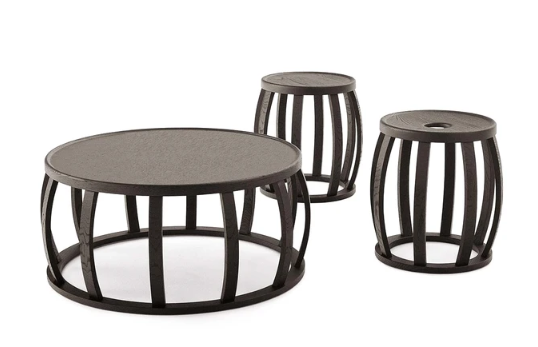The coffee table is more than just a place to rest your cup—it’s the functional and aesthetic centrepiece of your living room. Whether you’re hosting guests, displaying decor, or just propping up your feet after a long day, the right coffee table brings balance, style, and purpose to your space.
But with so many options in materials, sizes, styles, and features, choosing the perfect coffee table can feel overwhelming. This comprehensive guide will walk you through the key things to consider before buying a coffee table that complements your lifestyle and interior design.
1. Why the Coffee Table Matters
A well-chosen coffee table serves multiple functions:
- Design focal point: It anchors the seating arrangement and ties the room together.
- Functional surface: For drinks, snacks, books, remotes, and decor.
- Storage hub: Some offer shelves, drawers, or hidden compartments for extra functionality.
- Style statement: From sleek and modern to rustic or artistic, the coffee table sets the tone.
Whether your style leans classic, minimalist, boho, or industrial, your coffee table should reflect your aesthetic while meeting your daily needs.
2. Consider the Size and Scale
The size and proportion of your coffee table are crucial to creating a well-balanced living room.
Measure Before You Buy:
- Length: Aim for about two-thirds the length of your sofa. For example, if your sofa is 90 inches long, look for a table around 60 inches.
- Height: Ideally, the coffee table should be the same height as your sofa seat or 1–2 inches lower.
- Spacing: Leave 14–18 inches between the sofa and the table for comfortable movement, and at least 30 inches between the table and other furniture like TV units.
Oversized tables can overwhelm a room, while undersized ones can look out of place. Always take room size and furniture layout into account.
3. Choose the Right Shape
Coffee tables come in several shapes, each offering unique benefits:
a. Rectangular
The most common and versatile shape. Works well with standard sofas and long seating arrangements.
b. Square
Best for large living rooms or paired with sectional sofas. Offers ample surface area.
c. Round
Great for smaller spaces or homes with kids—no sharp corners, and easier to move around.
d. Oval
Combines the best of rectangular and round tables—long enough for bigger spaces but with softer edges.
Choose a shape that complements your furniture layout and fits your room’s traffic flow.
4. Material Matters
The material of your coffee table affects not just aesthetics, but also durability and maintenance.
- Wood: Classic and warm. Available in various finishes from rustic oak to modern walnut. It can be prone to scratches or water rings.
- Glass: Sleek and modern. Makes small rooms appear larger. However, it shows fingerprints and requires regular cleaning.
- Metal: Industrial, contemporary, or glam, depending on the finish (e.g., black steel, chrome, brass).
- Marble or Stone: High-end and luxurious. Durable but heavy. Natural variation adds uniqueness.
- Acrylic or Lucite: Transparent and trendy. Visually light, great for small spaces.
Choose a material that suits your lifestyle. For example, if you have young children, skip glass; if you love organic textures, go for wood or stone.
5. Storage and Functionality
If you value practicality, look for coffee tables with added functionality:
- Drawers: Hide away remotes, coasters, and clutter.
- Shelves: Store books, baskets, or decorative items.
- Lift-tops: Convert into a desk or dining surface—ideal for small apartments or work-from-home setups.
- Nesting tables: Two or three tables that can be separated when needed—space-saving and flexible.
Multifunctional tables are especially useful in smaller living rooms where every inch counts.
6. Match Your Interior Style
Your coffee table should complement the overall style of your living room:
- Modern/Minimalist: Clean lines, neutral colours, and materials like glass or metal.
- Rustic/Farmhouse: Reclaimed wood, distressed finishes, and chunkier profiles.
- Mid-Century Modern: Low profile, tapered legs, and warm wood tones.
- Industrial: Mixed materials like wood and metal with a raw, utilitarian vibe.
- Scandinavian: Simple, functional, light woods, and neutral tones.
Use the coffee table to reinforce your design style or introduce contrast and texture.
7. Personalise with Decor
Once you’ve selected the right coffee table, make it feel like part of your home with carefully chosen decor. Consider:
- Trays to organise remotes and coasters
- Books or magazines for visual interest
- Candles or decorative objects
- A small plant or floral arrangement for a touch of nature
Keep the tabletop clutter-free and balanced—group decor in odd numbers and vary the heights and textures.
Final Thoughts
Buying the perfect coffee table is about more than filling a space—it’s about enhancing your lifestyle and creating a cohesive, functional, and beautiful living room. By considering size, shape, material, storage, and style, you’ll be well-equipped to choose a coffee table that meets your needs and reflects your personal taste.
Take your time, measure carefully, and invest in a table that will serve you well—both as a practical piece and a stylish focal point.

